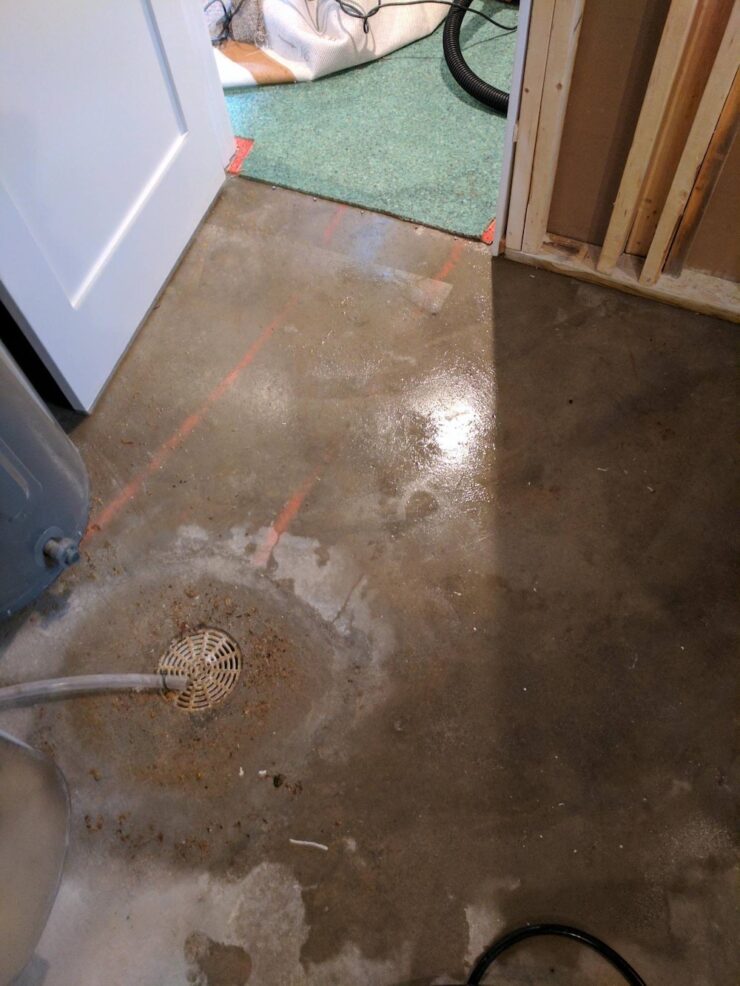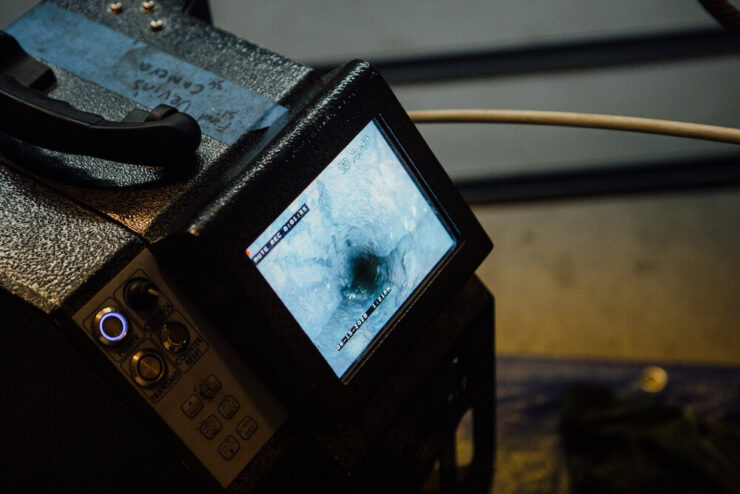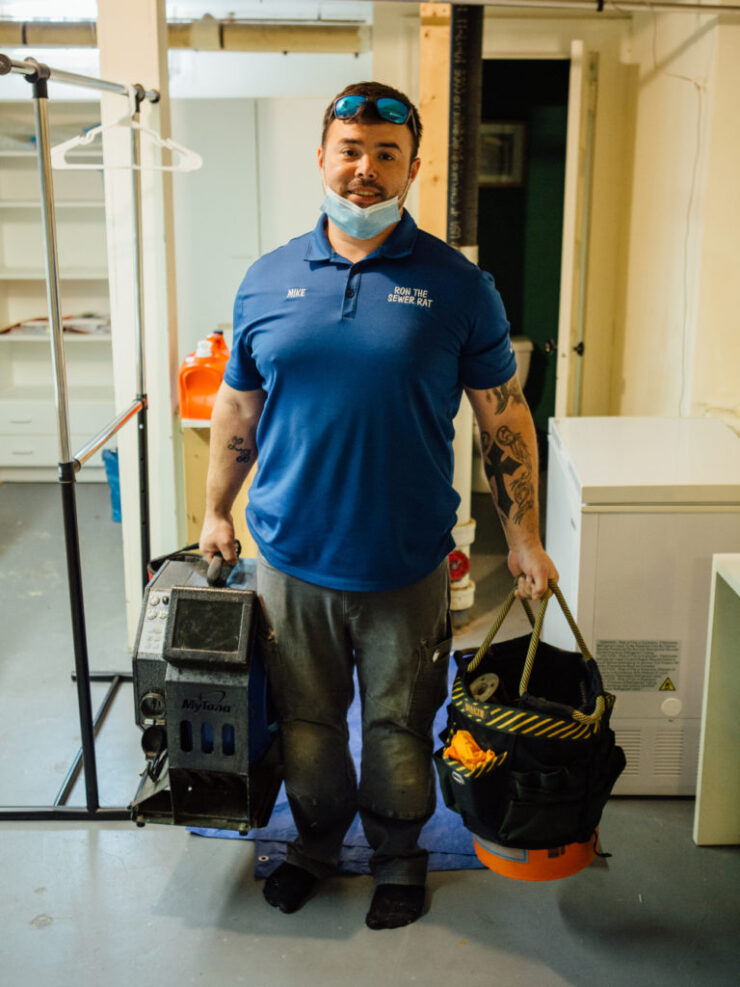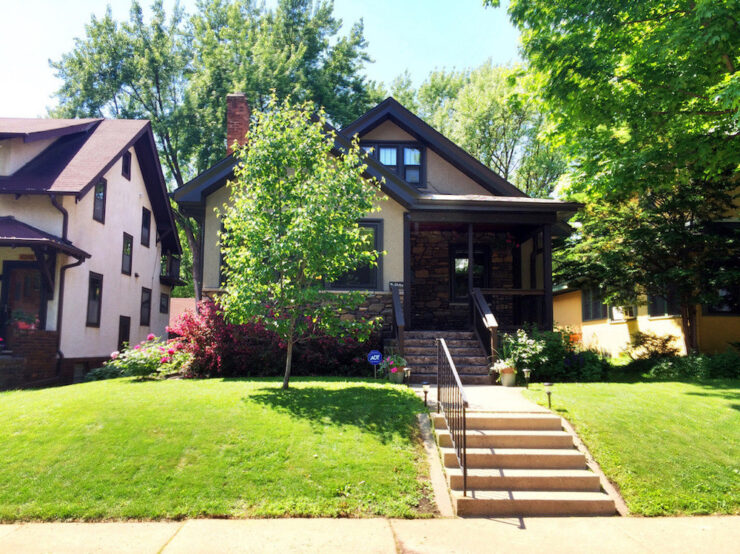If there is one marker of the dawn of civilization, it might very well be the Greeks’ marvelous invention of sewer systems, which allow many people to live in close proximity without all that human waste piling up. It may not be very pleasant to think about. But ignore the sewer line leading out of your house to the city line and there is nothing but peril in store for you.
| Consequence | Description | Estimated Cost |
|---|---|---|
| Sewer line repair/replacement | Fixing or replacing the damaged sewer line, either through trenching or trenchless methods. | $3,000 to $30,000 or more |
| Landscape restoration | Restoring any landscaping that was damaged or removed during the repair process. | $500 to $5,000 or more |
| Driveway or sidewalk repairs | Repairing or replacing any damaged driveways or sidewalks during the repair process. | $1,500 to $10,000 or more |
| Hotel or temporary housing | If your home is uninhabitable during the repair process, you may need temporary housing. | $100 to $200 per night |
| Cleanup and sanitation | Cleaning and sanitizing areas affected by sewage backups or leaks. | $500 to $10,000 or more |
| Loss of personal property | Replacing personal property damaged or destroyed by sewage backups or leaks. | Varies based on items affected |
| Increased water and sewer bills | Higher water and sewer bills due to the leak, depending on the severity of the break. | Varies based on usage and rates |
| Potential fines and penalties | Possible fines and penalties for not addressing the broken sewer line in a timely manner. | Varies based on local regulations |
When Kate and Nick Simpson were preparing to purchase their current home in Kingfield in fall 2015, things hit a snag when the property underwent a sewer inspection. In order to be sure of the health of their new home’s sewers, the couple had the sewer line scoped from the main line in the house to where it connects with the city sewer in the street.

What they found is that the camera ran into tree roots that had made their way into the sewer line, which is a common issue. In addition to the roots, they found there was an offset in the pipe.
“Two of the sections of the pipe were no longer connected flush and were offset by a couple inches,” Kate Simpson said. “Because we discovered the issue as part of the inspections process for the house, we were fortunately able to negotiate that the sellers fix the offset prior to the sale.”
Sewer line replacement cost?
Sewer line replacement costs can vary significantly depending on several factors, including the length of the line, the material used, the location and accessibility of the line, and local labor rates. Here is a rough estimate of sewer line replacement costs:
- Traditional sewer line replacement (trenching): This method involves digging a trench to access the damaged pipe. The cost can range from $50 to $250 per linear foot, with an average total cost between $3,000 and $25,000 or more depending on the project’s complexity.
- Trenchless sewer line replacement: This method usually involves pipe bursting or pipe lining and can be less invasive and disruptive than traditional trenching. The cost typically ranges from $60 to $300 per linear foot, with an average total cost between $3,500 and $30,000 or more depending on the specific method and project details.
Keep in mind that these are only rough estimates and can vary based on factors like permits, soil type, landscaping, and any required utility work. To get an accurate estimate for your specific situation, it’s best to contact a local plumbing professional who can assess your needs and provide a detailed quote.
The price of the fix? $4,200.
“The offset was located in the boulevard, so the sewer repair company had to excavate part of the curb and the boulevard and replace a 5- to 6-foot section of pipe,” Simpson said.
A sewer issue often starts with what seems like a small issue, said Chris Stephens, a service manager for Hero Plumbing, Heating & Cooling. There might be a clogged floor drain, for example, which you discover while doing laundry. During an inspection, the service people will look for roots in the line, offsets or bellies in the pipe — or even a complete blockage or shift in the pipe.

Tree roots “are looking for water, and a major source of water is the main line of your sewer,” Stephens said. “They reach your [pipe] and, over time, build up and cause a backup.”
The most expensive work you can have done is a complete line replacement, Stephens said. In that scenario, you have the plumber come out and excavate your yard, dig the line from the foundation of the home and trench through the yard to the city tap.
“That’s the last-case scenario if your line is in really bad shape,” Stephens said. “It’s the most expensive option.” According to Stephens, the price range for repairs that require excavations range from $5,000 for a spot repair to $20,000 to replace the line all the way from the house to the street.
You can also put in a sewer liner, which is like a black sock that you shoot through the entire line, Stephens said. The flexible tube is coated with resin, which hardens, or “cures,” to create a supplementary layer of pipe, preventing future root growth.
That procedure, he said, is a more permanent procedure that will make it so you don’t have to do regular preventative maintenance on the line. It can cost from $5,000 to $15,000, depending on the pipe’s length and width.
Older homes, more problems

“When you own an 80-year-old home in Minneapolis, there are quite a few things that can go wrong … and they do.”
So said former Linden Hills resident Santanu Chatterjea about his nightmarish experience with his sewer line. Chatterjea and his wife, Prachee Mukherjee, who have since moved from the neighborhood, weren’t expecting to find the floor drain in their utility room overspilling several years ago.
“Apparently, older homes such as ours had the outside sewer line hooked up to the basement drain,” Santanu Chatterjea said. Add in the backyard beautiful majestic trees, whose gnarly roots broke into the ancient sewer lines, and sewage reflux ensued.
The couple went through several services as they tried to figure out the problem. “One of them even snaked a camera into the line as far as he could and showed me a blurry image of a water trickle that confirmed his suspicion — drain tile collapse because of root intrusion,” Chatterjea said.
They were given two options: a trench-less sewer line repair that wouldn’t disturb the yard but would be very expensive, or an elaborate archaeological dig, which would involve digging up the front yard and ripping out the sidewalk, going all the way up to the city’s main sewer line under the street. The cost? $25,000.
“Needless to say, I was a bit distraught,” he said.
Finally, Chatterjea got connected to Ron the Sewer Rat, whose worker came and, for $300, pushed a cutter with blades from the inside of their home’s main water line into the sewer drain.
“He said the pine tree’s roots would probably return in a few years and cause the same issue, but that was normal in this part of the town. He’d have to come back.”
The main problem is that the older houses use clay tiles as opposed to PVC pipes, said Peter Kroening, a co-owner of Ron the Sewer Rat. The clay tiles, combined with all the old trees with heavy root systems, can spell disaster for your pipes.
Pipes located far below ground can drive up costs. In some areas of Minneapolis, such as near Lake & Chicago, Kroening said, pipes can be 25 feet deep and cost $45,000 to $50,000 to repair.
“If it’s 8 feet deep, we can just put in wood shoring or a metal bin,” he said, noting the bin prevents the excavation from collapsing. A pipe over 8 feet, he said, requires multiple bins and a crane-type system.
“Older communities tend to have deeper sewers,” Kroening said. That’s because in the early 20th century, the system relied on gravity. “The older your house, the greater the odds are of you having deeper lines.”
Meanwhile, houses near 50th Street, south of the lakes, tend to be in swampier terrain, Kroening said, and if pipes aren’t fastened to the bottom of a house’s foundation, they can detach. He’s seen cases where a pipe dropped 2 feet, which can cost up to $20,000 to repair.
Pre-sale inspections

When Dena Hotchkiss and her husband, Edward, moved into their 1935 home on Chowen Avenue in the Cedar-Isles-Dean neighborhood three years ago, they were in for a big surprise. The home had been newly remodeled and they were still in the midst of settling in. A week after their move-in date, they planned to take off for a trip to Portugal. But just before the trip, Hotchkiss went downstairs and found the entire basement flooded.
“We had to get the sewer line snaked out,” Dena Hotchkiss recalled. “We had to tear up the carpet. Thankfully, we lost just a bit of trim.”
Hotchkiss called Roto-Rooter and was able to get her sewer cleaned out without having to replace the entire line. She was told it would have cost about $30,000 to tear up her yard to put a new line in, or $15,000 to put a sleeve on the line.
“We are really lucky,” she said. “If you are moving into an older home, you may have not gotten that particular lesson.”
Kate Simpson said her biggest home-purchasing takeaway was “the importance of having the sewer line scoped as an additional inspection.”
Leah Drury, a real estate agent with Lakes Sotheby’s International, said sewer inspections have become a standard part of the inspection process in the last two to three years. “It didn’t cross anyone’s mind in the first five to seven years of my career,” she said. “Now it’s fairly standard for buyers to request a sewer inspection as part of home inspection.”
Unfortunately, it can be an expensive negotiation. “It’s not something you can prep your seller for,” Drury said. “If there is an issue, we have to find a resolution. It’s something you’ll have to disclose to any future buyer.

Drury said she’s seen buyers on the hook for $12,000 to $15,000, and savvy homebuyers come into the process wary. “Even sometimes in our showings, buyers are looking for trees,” she said. “‘Are there giant trees on the property?’ They are going to be curious about what that sewer line inspection is going to reveal.”
One property seller, in Fulton, had two different plumbers each give an opinion. The property was set high on a hill and the yard was terraced. One plumbing company told the owners they could address the problem in the future, while the other company suggested digging up the pipes and replacing them, which would mean the entire yard would need to be re-landscaped afterward.
“In this situation, the seller took on the cost of repair, and the buyer was responsible for the landscaping project,” Drury said. “All in all, it was an expensive proposition.” Still, Drury thinks there’s an upside.
When homebuyers and sellers deal with old pipes at the time of sale, there shouldn’t be as much of issue 10 to 15 years down the road. “Hopefully, it’s resolved for future buyers,” she said.
Prevention and maintenance

The best preventative measure, Stephens said, especially if you have an older home, is to properly maintain your pipes.
That means not flushing anything that shouldn’t be flushed. Wastewater and normal toilet paper only — no “flushable” wipes, no food scraps (put those in the green recycling bin). And get a screen for the hair in your shower or tub drain.
Preventative cleaning — in which you take a 4-inch blade and run it through the drain line (similar to what Chatterjea ended up having done) — can stop roots from growing back.
Whatever you do, don’t use Drano. Kroening, from Ron the Sewer Rat, warned against using any type of chemical to solve your sewer problems.
“Chemicals are a ploy to charge people extra money,” he said.
Kate and Nick Simpson now understand the importance of maintenance.
“We weren’t aware, prior to our experience, that the homeowner has responsibility for their main all the way until it connects with the city’s main in the middle of the street,” Kate Simpson said.
Main sewer line clog repair cost?
The cost to repair a main sewer line clog can vary depending on the severity of the clog, the method used to address it, and local labor rates. Here’s a rough breakdown of the costs associated with different approaches to clear a clogged main sewer line:
- Snaking or augering: This method involves using a long, flexible cable with a rotating head to break up or push through clogs. The cost for snaking a main sewer line typically ranges from $100 to $450.
- Hydro jetting: This process uses high-pressure water to blast through clogs and clean the pipe walls. Hydro jetting can be more effective in removing stubborn clogs and buildup but is usually more expensive than snaking. The cost for hydro jetting a main sewer line ranges from $350 to $600 or more, depending on the complexity of the job.
- Sewer camera inspection: In some cases, a plumber may need to perform a sewer camera inspection to identify the exact location and cause of the clog. The cost for this service ranges from $250 to $500, but it can help ensure a more targeted and effective repair.
- Additional costs: In some cases, there may be additional costs related to accessing the sewer line, such as digging up a portion of the yard, removing tree roots, or repairing landscaping after the work is complete. These costs can vary widely based on the specific situation and extent of the work required.
As you consider the costly repair of a broken sewer line, it’s important to weigh the benefits of other home improvements. In Minnesota, owning a pool can provide a fun and refreshing escape during the hot summer months. But is it worth the investment? Check out our article to learn more about the pros and cons of owning a pool in Minnesota.













